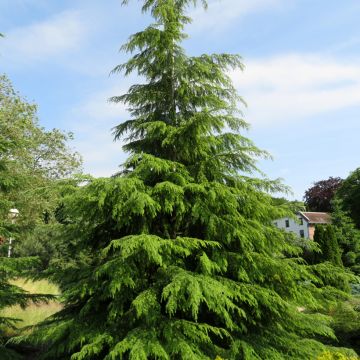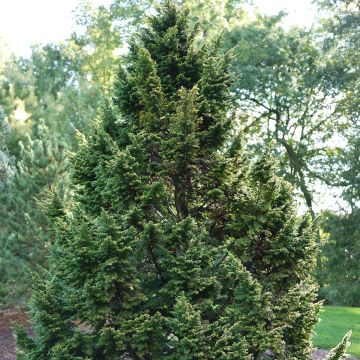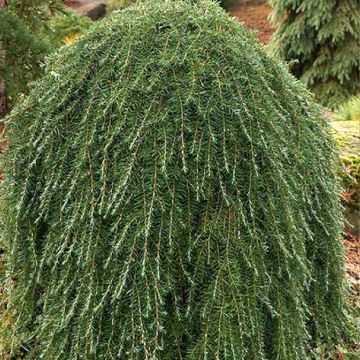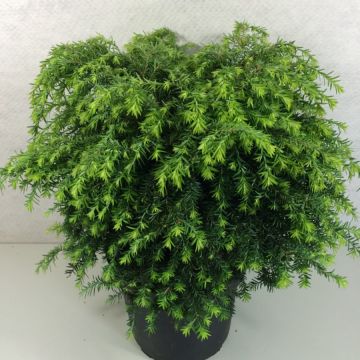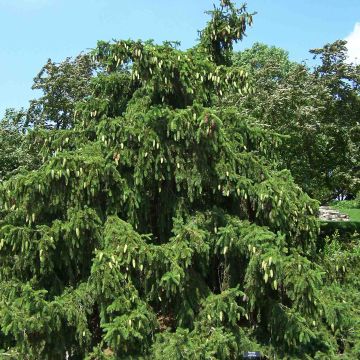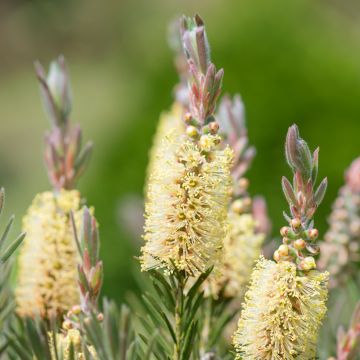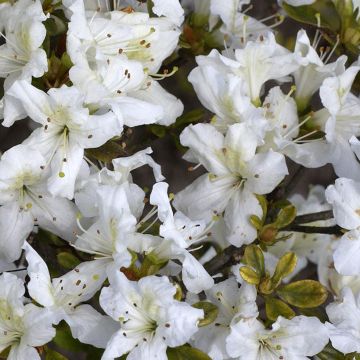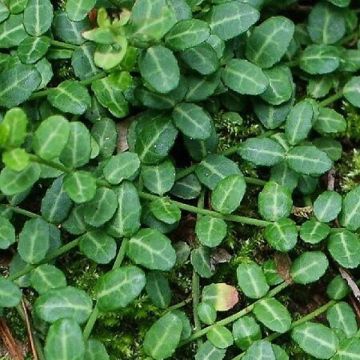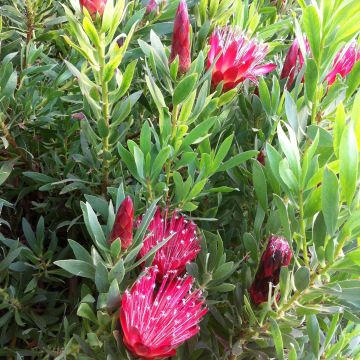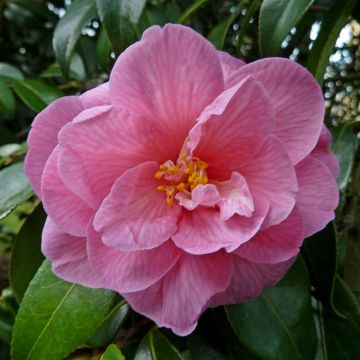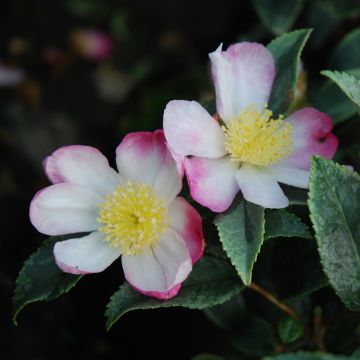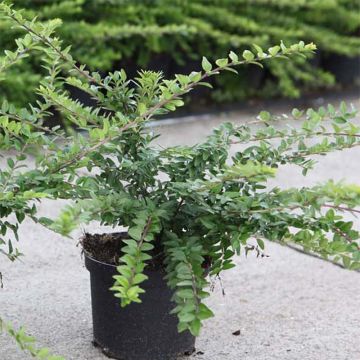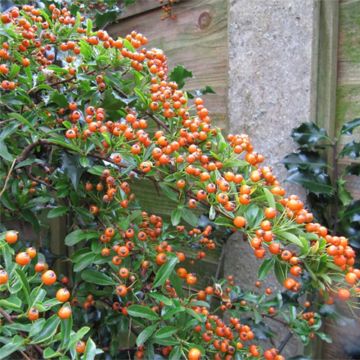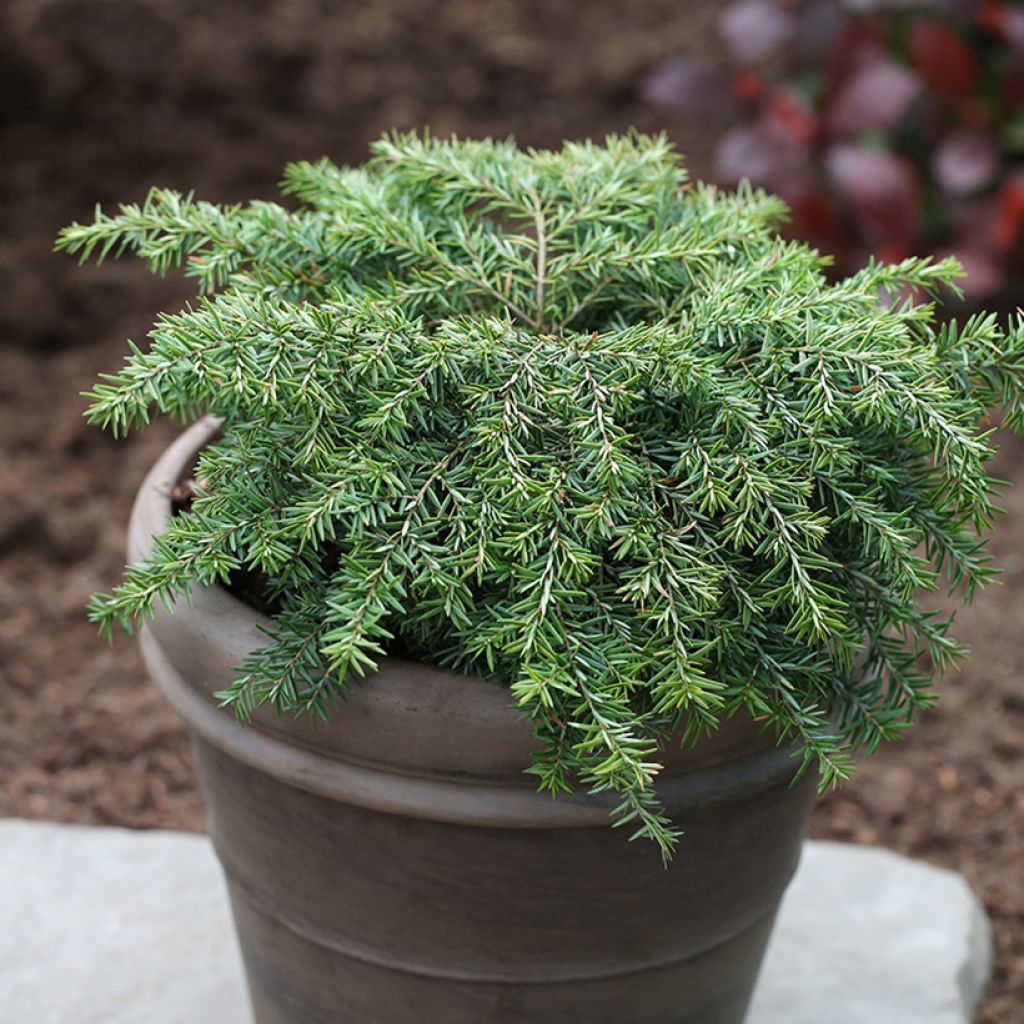

Pruche du Canada - Tsuga canadensis Nana
Tsuga canadensis Nana - Eastern Hemlock
Tsuga canadensis Nana
Eastern Hemlock, Canadian Hemlock, Eastern hemlock-spruce
This item cannot be shipped to the selected country
Delivery charge from €5.90
More information
Schedule delivery date,
and select date in basket
This plant carries a 24 months recovery warranty
More information
We guarantee the quality of our plants for a full growing cycle, and will replace at our expense any plant that fails to recover under normal climatic and planting conditions.
From €5.90 for pickup delivery and €6.90 for home delivery
Express home delivery from €8.90.
Does this plant fit my garden?
Set up your Plantfit profile →
Description
Tsuga canadensis Nana is a dwarf form of the Canadian Hemlock, with a unique, horizontal and slightly weeping habit. Creeping, dense and highly branched, it makes an excellent ground cover for shade. It spreads very slowly, gradually exposing its naked branches covered with a silvery white bark in the centre of the shrub. They create a beautiful contrast with the striking dark green and shiny needle-like foliage. Known for decades, this cultivar has proven itself to be a reliable choice among dwarf forms. This conifer is ideal to cover the base of a shaded slope, to fill gaps between rocks in a rockery, or to edge a low wall. It thrives in non-burning sunlight or partial shade, in moist and well-drained, neutral to acidic soil.
Tsuga canadensis, also known as Eastern Hemlock, is an evergreen conifer of the pine family, native to eastern Canada, where it always grows in shade, often in mixed forests and maple forests. This species slowly reaches a height of 30 m (98ft), with a diameter of 1 m (3ft), and can live up to 600 years. This very hardy conifer prefers fertile and moist soils, and does not tolerate drought or direct sunlight. Its roots are shallow and spreading widely. The Nana variety, derived from this species, is characterized by its very small size and creeping, prostrate habit, horizontal and almost weeping. Its growth is very slow, it will not exceed 30 cm (12in) in height after 5 years, reaching a total size of 70 cm (28in) at maturity. Its arched branches, starting from a very short trunk, gracefully hang down and spread on the ground. Its twigs are covered with flat, finely toothed, dark green and short needles, from 7 to 16 mm (1in). They are arranged in 2 rows on the twigs. The bark peels off in scales from a young age.
Tsuga canadensis Nana is suitable for all gardens, even the smallest ones. It looks good as a standalone plant and elegantly animates a rockery or a flowerbed. It goes well with large stones and low walls. It can be planted there as long as the soil is moist. It can also adorn the banks of a natural pond or water feature, in a non-scorching location. The real graphic qualities of this type of conifer naturally impose themselves in the design of contemporary gardens, inspired more by the aesthetics of shapes, silhouettes, and textures than by the flurry of blooms. These plants, with their reassuring permanence, structure pathways and border terraces, easily replacing trimmed boxwoods or hollies. The key is to play with volumes and colours.
Report an error about the product description
Tsuga canadensis Nana - Eastern Hemlock in pictures
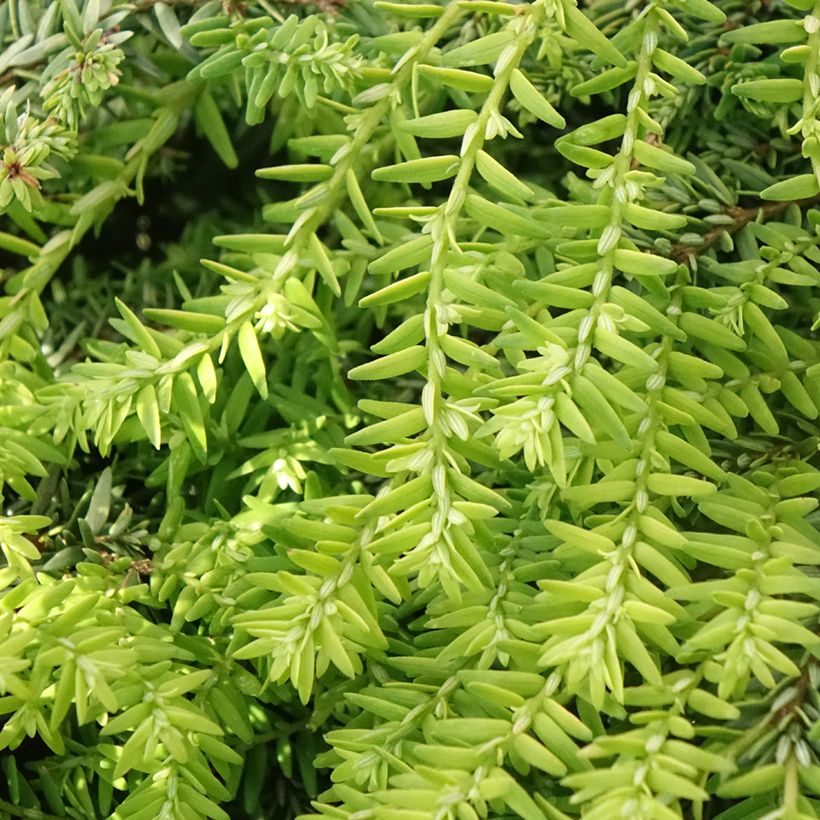

Plant habit
Foliage
Botanical data
Tsuga
canadensis
Nana
Pinaceae
Eastern Hemlock, Canadian Hemlock, Eastern hemlock-spruce
Cultivar or hybrid
Other Tsuga
Planting and care
Tsuga canadensis Nana can be planted from September to November or from February to June in ordinary, fertile, well-drained, neutral to slightly acidic soil that retains moisture. It prefers humus-rich, lime-poor soils. Choose a partially shaded location, sunny but not scorching, or grow it in the shade. Soak the root ball well before planting. Add organic amendment at planting and water generously for the first three years, and during prolonged droughts. Apply a special conifer fertiliser every year in April and hoe the soil in summer. This hardy conifer (up to -30 °C (1°F) at least) fears direct sunlight and dry, poor soils. Its naturally prostrate habit means it does not require pruning.
Planting period
Intended location
Care
This item has not been reviewed yet - be the first to leave a review about it.
Evergreen shrubs
Haven't found what you were looking for?
Hardiness is the lowest winter temperature a plant can endure without suffering serious damage or even dying. However, hardiness is affected by location (a sheltered area, such as a patio), protection (winter cover) and soil type (hardiness is improved by well-drained soil).

Photo Sharing Terms & Conditions
In order to encourage gardeners to interact and share their experiences, Promesse de fleurs offers various media enabling content to be uploaded onto its Site - in particular via the ‘Photo sharing’ module.
The User agrees to refrain from:
- Posting any content that is illegal, prejudicial, insulting, racist, inciteful to hatred, revisionist, contrary to public decency, that infringes on privacy or on the privacy rights of third parties, in particular the publicity rights of persons and goods, intellectual property rights, or the right to privacy.
- Submitting content on behalf of a third party;
- Impersonate the identity of a third party and/or publish any personal information about a third party;
In general, the User undertakes to refrain from any unethical behaviour.
All Content (in particular text, comments, files, images, photos, videos, creative works, etc.), which may be subject to property or intellectual property rights, image or other private rights, shall remain the property of the User, subject to the limited rights granted by the terms of the licence granted by Promesse de fleurs as stated below. Users are at liberty to publish or not to publish such Content on the Site, notably via the ‘Photo Sharing’ facility, and accept that this Content shall be made public and freely accessible, notably on the Internet.
Users further acknowledge, undertake to have ,and guarantee that they hold all necessary rights and permissions to publish such material on the Site, in particular with regard to the legislation in force pertaining to any privacy, property, intellectual property, image, or contractual rights, or rights of any other nature. By publishing such Content on the Site, Users acknowledge accepting full liability as publishers of the Content within the meaning of the law, and grant Promesse de fleurs, free of charge, an inclusive, worldwide licence for the said Content for the entire duration of its publication, including all reproduction, representation, up/downloading, displaying, performing, transmission, and storage rights.
Users also grant permission for their name to be linked to the Content and accept that this link may not always be made available.
By engaging in posting material, Users consent to their Content becoming automatically accessible on the Internet, in particular on other sites and/or blogs and/or web pages of the Promesse de fleurs site, including in particular social pages and the Promesse de fleurs catalogue.
Users may secure the removal of entrusted content free of charge by issuing a simple request via our contact form.
The flowering period indicated on our website applies to countries and regions located in USDA zone 8 (France, the United Kingdom, Ireland, the Netherlands, etc.)
It will vary according to where you live:
- In zones 9 to 10 (Italy, Spain, Greece, etc.), flowering will occur about 2 to 4 weeks earlier.
- In zones 6 to 7 (Germany, Poland, Slovenia, and lower mountainous regions), flowering will be delayed by 2 to 3 weeks.
- In zone 5 (Central Europe, Scandinavia), blooming will be delayed by 3 to 5 weeks.
In temperate climates, pruning of spring-flowering shrubs (forsythia, spireas, etc.) should be done just after flowering.
Pruning of summer-flowering shrubs (Indian Lilac, Perovskia, etc.) can be done in winter or spring.
In cold regions as well as with frost-sensitive plants, avoid pruning too early when severe frosts may still occur.
The planting period indicated on our website applies to countries and regions located in USDA zone 8 (France, United Kingdom, Ireland, Netherlands).
It will vary according to where you live:
- In Mediterranean zones (Marseille, Madrid, Milan, etc.), autumn and winter are the best planting periods.
- In continental zones (Strasbourg, Munich, Vienna, etc.), delay planting by 2 to 3 weeks in spring and bring it forward by 2 to 4 weeks in autumn.
- In mountainous regions (the Alps, Pyrenees, Carpathians, etc.), it is best to plant in late spring (May-June) or late summer (August-September).
The harvesting period indicated on our website applies to countries and regions in USDA zone 8 (France, England, Ireland, the Netherlands).
In colder areas (Scandinavia, Poland, Austria...) fruit and vegetable harvests are likely to be delayed by 3-4 weeks.
In warmer areas (Italy, Spain, Greece, etc.), harvesting will probably take place earlier, depending on weather conditions.
The sowing periods indicated on our website apply to countries and regions within USDA Zone 8 (France, UK, Ireland, Netherlands).
In colder areas (Scandinavia, Poland, Austria...), delay any outdoor sowing by 3-4 weeks, or sow under glass.
In warmer climes (Italy, Spain, Greece, etc.), bring outdoor sowing forward by a few weeks.

































